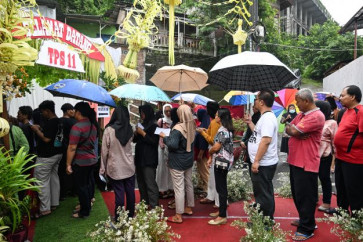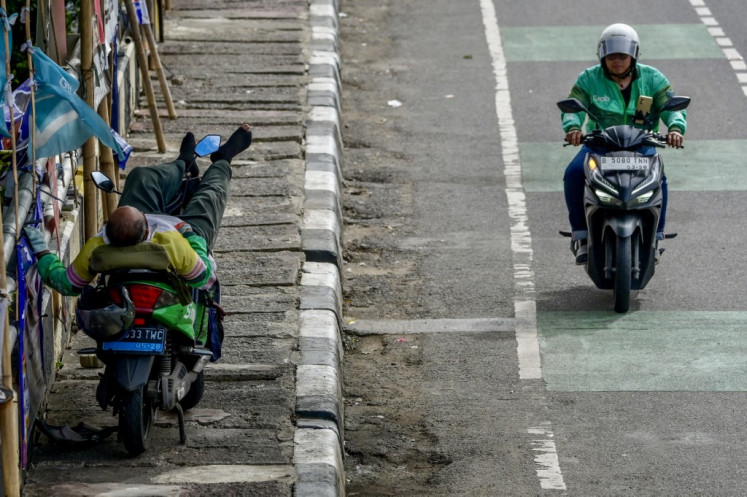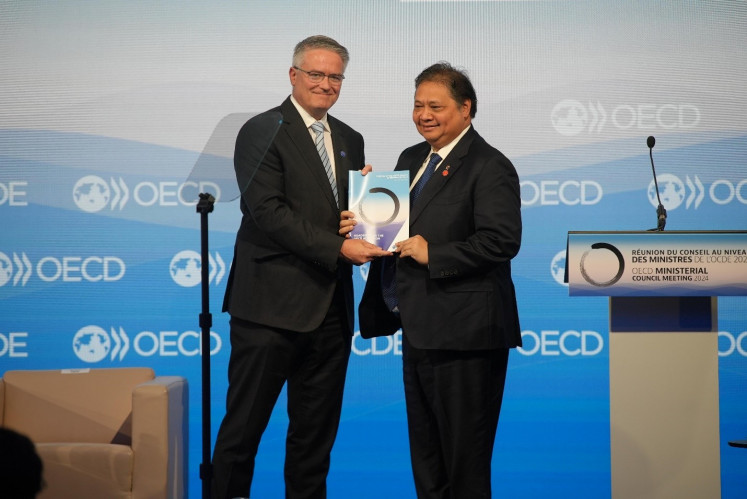Ways of Clay: JCCB#4
Unique to other conventional mediums, clay offers artists distinctive and potent properties, forged over eons by the natural elements, to co-create with

Unique to other conventional mediums, clay offers artists distinctive and potent properties, forged over eons by the natural elements, to co-create with. A piece of Mother Earth, throughout the ages it has inspired civilizations, both practically and esoterically, the ancient Greeks, Egyptians and Sumerians all had creation myths that tell of the hands of Gods shaping the first human beings from clay.
The fourth Jakarta Contemporary Ceramic Biennale (JCCB#4), closing tomorrow Jan. 22, opened at the National Gallery of Indonesia in Jakarta Dec. 8, 2016. Themed Ways of Clay: Perspective Toward the Future the exhibition features works by 41 invited artists from 16 countries (eight from Indonesia), interpreting history as a point of view to aid in the understanding of how the practice of ceramic arts may progress into the future.
Initiated in 2009 by Indonesian curators Asmudjo Iranto and Rifky Effendi the JCCB has become a contemporary ceramic art event offering fresh perspectives, especially in the ceramic art world. Each biennale has featured mixed media works adopting video, photography and other mediums side-by-side with clay or ceramics reflecting the process of evolution of the medium into the greater contemporary arts practice.
“The Western art world considers ceramics as being outside of the classification of the fine arts, in Indonesia, however the perception is different,” said Rifky Effendi.
“As Indonesian art history is not well recorded the canons of fine art are still loosely defined, thus allowing opportunities for increasing local appreciation of the art form by both the public, and art collectors.”
The distinctive feature of JCCB#4 was the residency program of which 20 of the invited artists participated in. Setting varied scenarios to inspire a highly diverse range of creative outcomes by the artists, with the focus upon collaboration, learning and shared experiments, artists participated in one month residency programs between August — November 2016, at independent ceramic studios, traditional small to mid sized ceramic industries, large scale factories, ceramic producing communities and ceramic institutions, such as colleges and vocational schools.
Aligning the artists with Indonesia’s environment, people and culture, the programs’ rural and urban hosts have their own respective characteristics, materials and resources, as well as facilities. The residencies were held in Bandung, Majalengka, Kasongan-Bantul, Sleman-Yogakarta, Semerang and a few locations in Bali. While about half of 41 artists were ceramicists the biennale presented wonderful opportunities to the remaining invitees, who had never, or rarely worked with clay to explore this “new” medium.
“Introducing well-known contemporary artists into JCCB#4’s program helps both collectors and the curious in their perception of what is contemporary art, and how it explores mediums outside of the realms of conventional painting and sculpture,” Effendi said and adds, “The artists were excited to participate in the residency program, to explore new mediums and find fresh form for their ideas.”

“I was chosen by JCCB#4 for my residency with PT Sango Ceramics Indonesia [the nation’s leading ceramics tableware manufacturer based in Semarang, Central Java] who allowed me creative possibilities that both they and I had yet to encountered,” said emmerging artist Uji Hahan from Yogyakarta, whose work Liability — Between Lack and Achievement was an exhibition highlight.
“The work, in which I experimented with electroplating techniques, challenged both PT Sango’s and my own working practices.”
“Inspired by natural history specimens and archaeological findings, being the creator and a collector, Broken Dreams Without Wings explores some of the ways people have brought things together into purposeful collections to preserve memory,” said Singaporean artist AnGie Seah of her clay series in which she rearranged objects to create new ways of thinking about nature, time and interpreting tangible things from her environment.
“I enjoyed the process of experimentation with other materials to add on to the clay bodies of my work, underlining JCCB#4 concept Ways of Clay.”
Eddie Prabandono, known for his large-scale installations, exhibited Padi one of the more interesting aesthetic and conceptual works of JCCB#4 that featured a collection of plates piled one upon the other, over two meters high positioned upon a chair, from which rice grew during the exhibitions duration.
Making reference to human greed in his “living art work” Prabandono said, “The increasing use of agricultural land for housing and development is an important issue that requires urgent attention.”
Other highlights include Bandung artist Arya Pandjalu’s glazed stoneware Electric Earth, Ukrainian Maria Volkhova’s Cloboters and Serbian Ljubica Jocic Knezevic’s Fragment Of Life.
Supported by a program of Artist Talks — Ceramic Sharing & Presentations, regular gallery tours, and ceramic workshops by Ganara Art Space open to the public every weekend, attendance numbers at the National Gallery revealed one of the success stories of JCCB#4. During the holiday seasons visitors numbers were 1,000 per day, while non-holiday periods visitors ranged between 500-600, and on weekends increased to 700-900 people a day.









